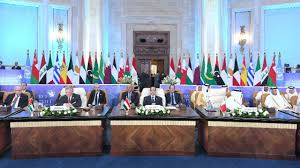In a significant development for the Middle East region, a breakthrough has been achieved in peace talks as a ceasefire agreement is finally reached. This historic moment comes after years of conflict and tensions, offering a glimmer of hope for stability and reconciliation in the region. In this article, we explore the details of the ceasefire agreement, the factors that led to this breakthrough, and the potential implications for peace and security in the Middle East.
Understanding the Ceasefire Agreement
Key Terms and Provisions
The ceasefire agreement includes specific terms and provisions aimed at halting hostilities, promoting dialogue, and addressing the root causes of conflict. Key components may include the withdrawal of troops, establishment of buffer zones, and mechanisms for monitoring and enforcement.
Involvement of Mediators and Diplomats
Mediators and diplomats from various international organizations, neighboring countries, and global powers played a crucial role in brokering the ceasefire agreement. Their efforts helped bridge divides, build trust, and facilitate dialogue between conflicting parties.
Factors Contributing to the Breakthrough
Shift in Political Dynamics
The breakthrough in peace talks reflects a shift in political dynamics within the region, with key stakeholders expressing a willingness to engage in dialogue and compromise for the greater good.
Public Pressure and International Support
Public pressure and international support for peace initiatives played a significant role in pushing conflicting parties to the negotiating table and seeking common ground for resolution.
Implications for Peace and Security
Opportunities for Reconciliation and Reconstruction
The ceasefire agreement opens up opportunities for reconciliation, reconstruction, and the rebuilding of war-torn communities. It lays the groundwork for addressing underlying grievances and promoting long-term stability.
Challenges and Obstacles Ahead
While the ceasefire agreement is a positive step towards peace, challenges and obstacles remain on the path to lasting reconciliation. Deep-seated divisions, historical grievances, and regional power dynamics may pose significant challenges to the implementation of the agreement.
The breakthrough in Middle East peace talks and the agreement on a ceasefire mark a significant milestone in the quest for peace and stability in the region. While challenges lie ahead, the ceasefire agreement offers hope for a brighter future, where dialogue, cooperation, and mutual respect prevail over conflict and violence.




